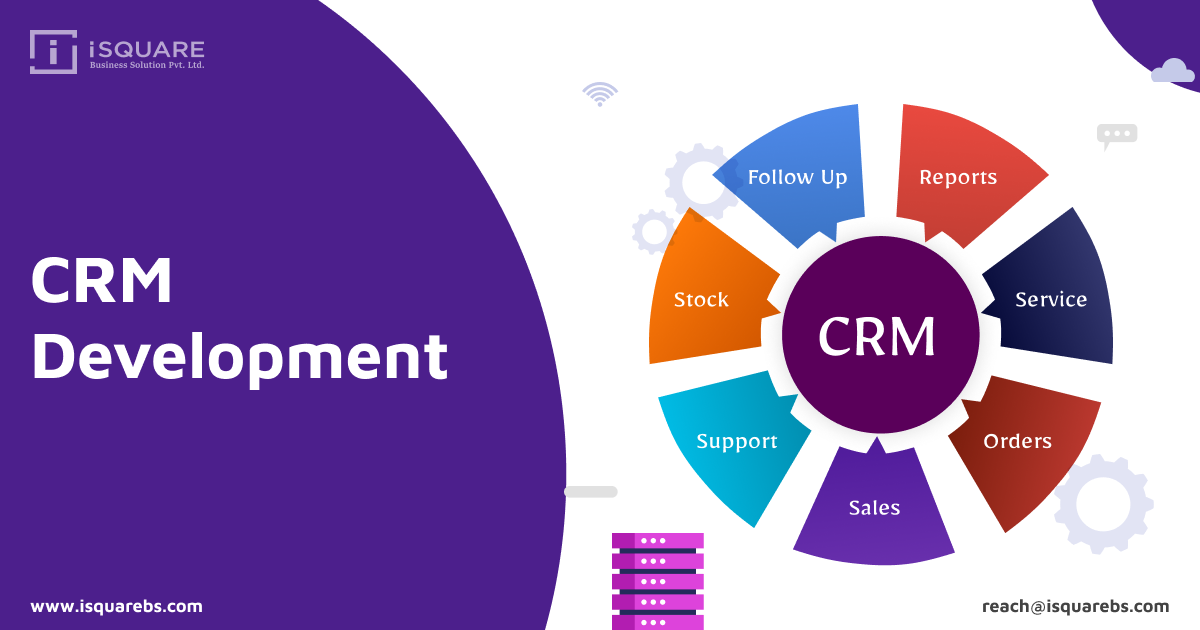In today’s business environment, customer data is one of the most valuable assets a company can have. To harness the full potential of this data, many organizations turn to Customer Relationship Management (CRM) systems. While off-the-shelf CRM platforms like Salesforce or HubSpot offer powerful features, they may not always align perfectly with a company’s unique workflows or industry-specific requirements. That’s where CRM development comes into play.
CRM development is the process of designing, building, and implementing a custom CRM solution tailored specifically to a business’s operations, goals, and customer interaction models. This approach offers unmatched flexibility and control over how a company manages sales, support, marketing, and client relationships.
What Is CRM Development?
CRM development involves creating a system—either from scratch or by customizing an existing platform—that allows an organization to:
-
Track leads and customer interactions
-
Manage sales pipelines
-
Automate marketing campaigns
-
Improve customer service workflows
-
Analyze performance and customer behavior
The system can be web-based, mobile-friendly, cloud-hosted, or on-premises, depending on the company’s preferences and technical infrastructure.
Why Choose Custom CRM Development?
While commercial CRMs are robust and widely used, a custom-built CRM provides distinct advantages for businesses with complex or evolving needs.
Key Benefits:
1. Tailored Functionality
You can design features that match exactly how your team works, without having to adjust your processes to fit pre-built software limitations.
2. Scalability
A custom CRM can grow with your business, allowing new modules and features to be added over time without heavy rework.
3. Integration Flexibility
You can ensure seamless integration with your existing systems—such as ERP, email services, accounting platforms, or custom apps.
4. Data Ownership and Security
You retain full control over your data architecture and security protocols, which is essential in industries with strict compliance standards.
5. Cost Control
While initial development may be more expensive than a monthly subscription model, long-term costs can be lower, especially for larger organizations.
Key Features to Include in CRM Development
Every CRM should be built with core functionalities that support customer-centric operations. Common modules include:
-
Lead Management: Capture, qualify, and track leads through various marketing channels.
-
Contact & Account Management: Maintain detailed records of clients, companies, and interactions.
-
Sales Pipeline: Visualize and manage deals at every stage.
-
Task and Activity Tracking: Assign tasks and follow-ups to teams.
-
Email & Communication Logs: Integrate with email servers and track conversations.
-
Reporting & Dashboards: Generate visual analytics and key performance indicators.
-
Workflow Automation: Automate repetitive tasks like follow-up emails or status changes.
-
Mobile Access: Enable users to manage customer relationships on the go.
CRM Development Process
Building a CRM from the ground up involves a structured approach to ensure usability, scalability, and performance.
1. Requirements Gathering
Understand business processes, user roles, goals, and pain points. This stage sets the foundation for development.
2. System Design
Create user interface (UI) and user experience (UX) designs, database schema, and system architecture.
3. Development
The coding phase includes backend logic, frontend components, API integrations, and custom features.
4. Testing & QA
Functional, usability, and security testing ensures that the CRM works as intended before launch.
5. Deployment
The CRM is launched to a production environment, either on-premises or in the cloud.
6. Training & Support
Users are trained on how to use the system effectively, and technical support is provided for maintenance and updates.
Technology Stack for CRM Development
Choosing the right tech stack depends on your goals and infrastructure. Commonly used technologies include:
-
Frontend: React, Angular, Vue.js
-
Backend: Node.js, PHP, Python (Django), Ruby on Rails
-
Database: PostgreSQL, MySQL, MongoDB
-
Hosting: AWS, Azure, Google Cloud, or on-premises servers
-
APIs: REST or GraphQL for integrations
-
Security: SSL, OAuth, role-based access control (RBAC)
Challenges in CRM Development
-
Time and Cost: Building from scratch requires significant investment and planning.
-
User Adoption: A CRM must be intuitive and align with team workflows to encourage usage.
-
Data Migration: Moving from spreadsheets or another CRM can be complex.
-
Maintenance: Continuous support is needed to fix bugs, update features, and ensure system stability.
Partnering with experienced developers or a CRM development agency can help mitigate these risks.
Conclusion
CRM development offers businesses the opportunity to create a fully customized, scalable, and secure system for managing customer relationships. Unlike off-the-shelf platforms, a custom CRM is built around your specific needs, ensuring optimal performance, integration, and user satisfaction.
For organizations that view customer relationships as strategic assets, investing in custom CRM development can deliver long-term value and a competitive edge.

